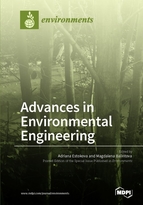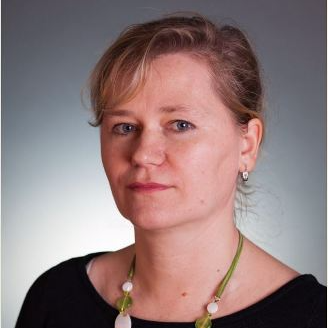Advances in Environmental Engineering
A special issue of Environments (ISSN 2076-3298).
Deadline for manuscript submissions: closed (30 November 2017) | Viewed by 95396
Special Issue Editors
Interests: heavy metals’ leachability from concrete; durability of materials; environmental evaluation of materials; environmental chemistry
Special Issues, Collections and Topics in MDPI journals
Interests: wastewater treatment; acid mine drainage; heavy metal removal; sorption methods; environmental impact assessment
Special Issues, Collections and Topics in MDPI journals
Special Issue Information
Dear Colleagues,
Environmental quality is crucial to our health, our economy and our living. However, it faces several serious challenges, not least those of climate change, unsustainable consumption and production, as well as various forms of pollution. This Special Issue invites research papers aimed at a wide range of environmental issues: Water and wastewater management, water and sediment pollution control and remediation, soil degradation, conservation and remediation, waste management, landscape management, air quality and indoor environment, environmental impacts of buildings and materials, and LCA (Life-cycle assessment). Contributions should describe novel and significant knowledge, scientific results and advanced applications in the field of environmental engineering. Each manuscript should contribute to engineers and scientists stay on top of technological advances in all areas associated with the environment. This Special Issue provides an integrated view of the trends in solving the problems associated with the achievement of sustainability.
Prof. Dr. Adriana EstokovaProf. Dr. Magdalena Balintova
Guest Editors
Manuscript Submission Information
Manuscripts should be submitted online at www.mdpi.com by registering and logging in to this website. Once you are registered, click here to go to the submission form. Manuscripts can be submitted until the deadline. All submissions that pass pre-check are peer-reviewed. Accepted papers will be published continuously in the journal (as soon as accepted) and will be listed together on the special issue website. Research articles, review articles as well as short communications are invited. For planned papers, a title and short abstract (about 100 words) can be sent to the Editorial Office for announcement on this website.
Submitted manuscripts should not have been published previously, nor be under consideration for publication elsewhere (except conference proceedings papers). All manuscripts are thoroughly refereed through a single-blind peer-review process. A guide for authors and other relevant information for submission of manuscripts is available on the Instructions for Authors page. Environments is an international peer-reviewed open access monthly journal published by MDPI.
Please visit the Instructions for Authors page before submitting a manuscript. The Article Processing Charge (APC) for publication in this open access journal is 1800 CHF (Swiss Francs). Submitted papers should be well formatted and use good English. Authors may use MDPI's English editing service prior to publication or during author revisions.
Keywords
- water and wastewater management
- water and sediment pollution control and remediation
- soil degradation
- conservation and remediation
- waste management
- landscape management
- air quality and indoor environment
- environmental impacts of buildings and materials
- LCA







